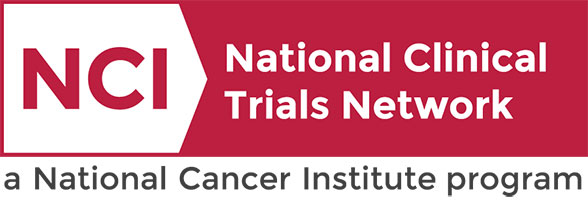Patient Search
 |
 |
|
KaCrole Higgins was diagnosed with breast cancer in 2020. “In May 2020, I found a lump in my breast. I cried. By June, it was diagnosed as breast cancer, triple positive, stage 1A. While getting this cancer diagnosis was devastating, it also became an opportunity. Suddenly, the cancer gave me clarity. It gave me clarity about what was important, what was good in my life, what was toxic in my life, and what I needed to do.” Click below to read more of KaCrole’s story |
If Landon Ryan had been diagnosed with bilateral retinoblastoma 10, 20 or 30 years ago, she might not be here today with nearly perfect vision.Thanks to recent improvements in the treatment for this rare form of cancer that almost exclusively affects children under the age of 5, the diagnosis had the power to change Landon’s life when she was 11 months old, but not to take it — or her eyesight. Click below to learn more about Landon and her story. https://momentum.vicc.org/2022/04/brighter-outlook/ |
A Study of [177Lu]Lu-DOTA-TATE in Newly Diagnosed ES-SCLC Patients in Combination With Carboplatin, Etoposide and Atezolizumab
This study aims to establish a safe and well tolerated dose of \[177Lu\]Lu-DOTA-TATE in combination with carboplatin, etoposide and atezolizumab in this setting and to assess preliminary efficacy of this combination treatment versus the combination of carboplatin, etoposide, and atezolizumab.The study will be essential to assess a new potential therapeutic option in participants with this aggressive cancer type.
Not Available
I/II
Ramirez, Robert
NCT05142696
VICC-DTTHO24168P
Testing What Happens When an Immunotherapy Drug (Pembrolizumab) is Given by Itself Compared to the Usual Treatment of Chemotherapy With Radiation After Surgery for Recurrent Head and Neck Squamous Cell Carcinoma
Head/Neck
Head/Neck
This phase II trial studies the effect of pembrolizumab alone compared to the usual approach (chemotherapy \[cisplatin and carboplatin\] plus radiation therapy) after surgery in treating patients with head and neck squamous cell carcinoma that has come back (recurrent) or patients with a second head and neck cancer that is not from metastasis (primary). Radiation therapy uses high energy radiation or protons to kill tumor cells and shrink tumors. Cisplatin is in a class of medications known as platinum-containing compounds. It works by killing, stopping or slowing the growth of cancer cells. Carboplatin is also in a class of medications known as platinum-containing compounds. It works in a way similar to the anticancer drug cisplatin, but may be better tolerated than cisplatin. Carboplatin works by killing, stopping or slowing the growth of cancer cells. Immunotherapy with monoclonal antibodies, such as pembrolizumab, may help the body's immune system attack the cancer and may interfere with the ability of tumor cells to grow and spread. Giving pembrolizumab alone after surgery may work better than the usual approach in shrinking recurrent or primary head and neck squamous cell carcinoma.
Head/Neck
II
Choe, Jennifer
NCT04671667
ECOGHNEA3191
Enhanced Recovery After Surgery in Extremity Sarcoma
Sarcoma
Sarcoma
The purpose of this study is to demonstrate the efficacy of implementing the enhanced recovery after surgery (ERAS) pathway in a prospective manner to patients undergoing surgical treatment for extremity sarcoma.
Sarcoma
N/A
Lawrenz, Joshua
NCT04461171
VICCSAR2020
SMP-3124LP in Adults With Advanced Solid Tumors
Multiple Cancer Types
An Open-label, Phase I Dose Escalation and Phase 2 Dose Expansion Study to Assess Safety, Tolerability, Preliminary Antitumor Activity of SMP 3124LP in Adults with Advanced Solid Tumors
Breast,
Head/Neck,
Lung,
Non Small Cell,
Ovarian,
Phase I,
Uterine
I/II
Eng, Cathy
NCT06526819
VICC-DTPHI23348
TReatment of ADC-Refractory Breast CancEr With Dato-DXd or T-DXd: TRADE DXd
Breast
Breast
The purpose of this study is to test the safety and effectiveness of the sequence of two investigational drugs (trastuzumab deruxtecan followed by datopotamab deruxtecan, or datopotamab deruxtecan followed by trastuzumab deruxtecan) to learn whether the treatment works in treating HER2-negative (HER2-low or HER2-0) metastatic breast cancer.
The names of the study drugs involved in this study are:
* Datopotamab deruxtecan (a type of antibody drug conjugate)
* Trastuzumab deruxtecan (a type of antibody drug conjugate)
The names of the study drugs involved in this study are:
* Datopotamab deruxtecan (a type of antibody drug conjugate)
* Trastuzumab deruxtecan (a type of antibody drug conjugate)
Breast
II
Abramson, Vandana
NCT06533826
VICC-ITBRE23546
Evaluating 111In Panitumumab for Nodal Staging in Head and Neck Cancer
Multiple Cancer Types
This phase I trial tests the safety and effectiveness of indium In 111 panitumumab (111In-panitumumab) for identifying the first lymph nodes to which cancer has spread from the primary tumor (sentinel lymph nodes) in patients with head and neck squamous cell carcinoma (HNSCC) undergoing surgery. The most important factor for survival for many cancer types is the presence of cancer that has spread to the lymph nodes (metastasis). Lymph node metastases in patients with head and neck cancer reduce the 5-year survival by half. Sometimes, the disease is too small to be found on clinical and imaging exams before surgery. 111In-panitumumab is in a class of medications called radioimmunoconjugates. It is composed of a radioactive substance (indium In 111) linked to a monoclonal antibody (panitumumab). Panitumumab binds to EGFR receptors, a receptor that is over-expressed on the surface of many tumor cells and plays a role in tumor cell growth. Once 111In-panitumumab binds to tumor cells, it is able to be seen using an imaging technique called single photon emission computed tomography/computed tomography (SPECT/CT). SPECT/CT can be used to make detailed pictures of the inside of the body and to visualize areas where the radioactive drug has been taken up by the cells. Using 111In-panitumumab with SPECT/CT imaging may improve identification of sentinel lymph nodes in patients with head and neck squamous cell cancer undergoing surgery.
Head/Neck,
Phase I
I
Rosenthal, Eben
NCT05901545
VICC-EDHAN23201P
Testing Nivolumab and Ipilimumab Immunotherapy With or Without the Targeted Drug Cabozantinib in Recurrent, Metastatic, or Incurable Nasopharyngeal Cancer
Head/Neck
Head/Neck
This phase II trial tests how well nivolumab and ipilimumab immunotherapy with or without cabozantinib works in treating patients with nasopharyngeal cancer that has come back (after a period of improvement) (recurrent), has spread from where it first started (primary site) to other places in the body (metastatic), or for which no treatment is currently available (incurable). Immunotherapy with monoclonal antibodies, such as nivolumab and ipilimumab, may help the body's immune system attack the cancer, and may interfere with the ability of tumor cells to grow and spread. Cabozantinib is in a class of medications called kinase inhibitors. It works by blocking the action of an abnormal protein that signals cancer cells to multiply. This helps slow or stop the spread of cancer cells. Giving immunotherapy with nivolumab and ipilimumab and targeted therapy with cabozantinib may help shrink and stabilize nasopharyngeal cancer.
Head/Neck
II
Choe, Jennifer
NCT05904080
ALLHNA092105
Study of Targeted Therapy vs. Chemotherapy in Patients With Thyroid Cancer
Thyroid
Thyroid
This phase III trial compares the effect of cabozantinib versus combination dabrafenib and trametinib for the treatment of patients with differentiated thyroid cancer that does not respond to treatment (refractory) and which expresses a BRAF V600E mutation. Cabozantinib is in a class of medications called receptor tyrosine kinase inhibitors. It binds to and blocks the action of several enzymes which are often over-expressed in a variety of tumor cell types. This may help stop or slow the growth of tumor cells and blood vessels the tumor needs to survive. Dabrafenib is an enzyme inhibitor that binds to and inhibits the activity of a protein called B-raf, which may inhibit the proliferation of tumor cells which contain a mutated BRAF gene. Trametinib is also an enzyme inhibitor. It binds to and inhibits the activity of proteins called MEK 1 and 2, which play a key role in activating pathways that regulate cell growth. This may inhibit the growth of tumor cells mediated by these pathways. The usual approach for patients with thyroid cancer is targeted therapy with dabrafenib and trametinib. This trial may help researchers decide which treatment option (cabozantinib alone or dabrafenib in combination with trametinib) is safer and/or more effective in treating patients with refractory BRAF V600E-mutated differentiated thyroid cancer.
Thyroid
III
Choe, Jennifer
NCT06475989
ECOGHNEA3231
Accelerated v's Standard BEP Chemotherapy for Patients With Intermediate and Poor-risk Metastatic Germ Cell Tumours
Germ Cell (Pediatrics)
Germ Cell (Pediatrics)
The purpose of this study is to determine whether accelerated BEP chemotherapy is more effective than standard BEP chemotherapy in males with intermediate and poor-risk metastatic germ cell tumours.
Germ Cell (Pediatrics)
III
Borinstein, Scott
NCT02582697
COGAGCT1532
Testing the Combination of the Anti-Cancer Drugs Temozolomide and M1774 to Evaluate Their Safety and Effectiveness
Multiple Cancer Types
This phase I/II trial studies the side effects and best dose of temozolomide and M1774 and how well they works in treating patients with cancer that has spread from where it first started (primary site) to other places in the body (metastatic) and may have spread to nearby tissue, lymph nodes, or distant parts of the body (advanced). Temozolomide is in a class of medications called alkylating agents. It works by damaging the cell's deoxyribonucleic acid (DNA) and may kill tumor cells and slow down or stop tumor growth. M1774 may stop the growth of cancer cells by blocking some of the enzymes needed for cell growth. Adding M1774 to temozolomide may shrink or stabilize cancer for longer than temozolomide alone.
Miscellaneous,
Phase I
I/II
Davis, Elizabeth
NCT05691491
VICCPHI10572


